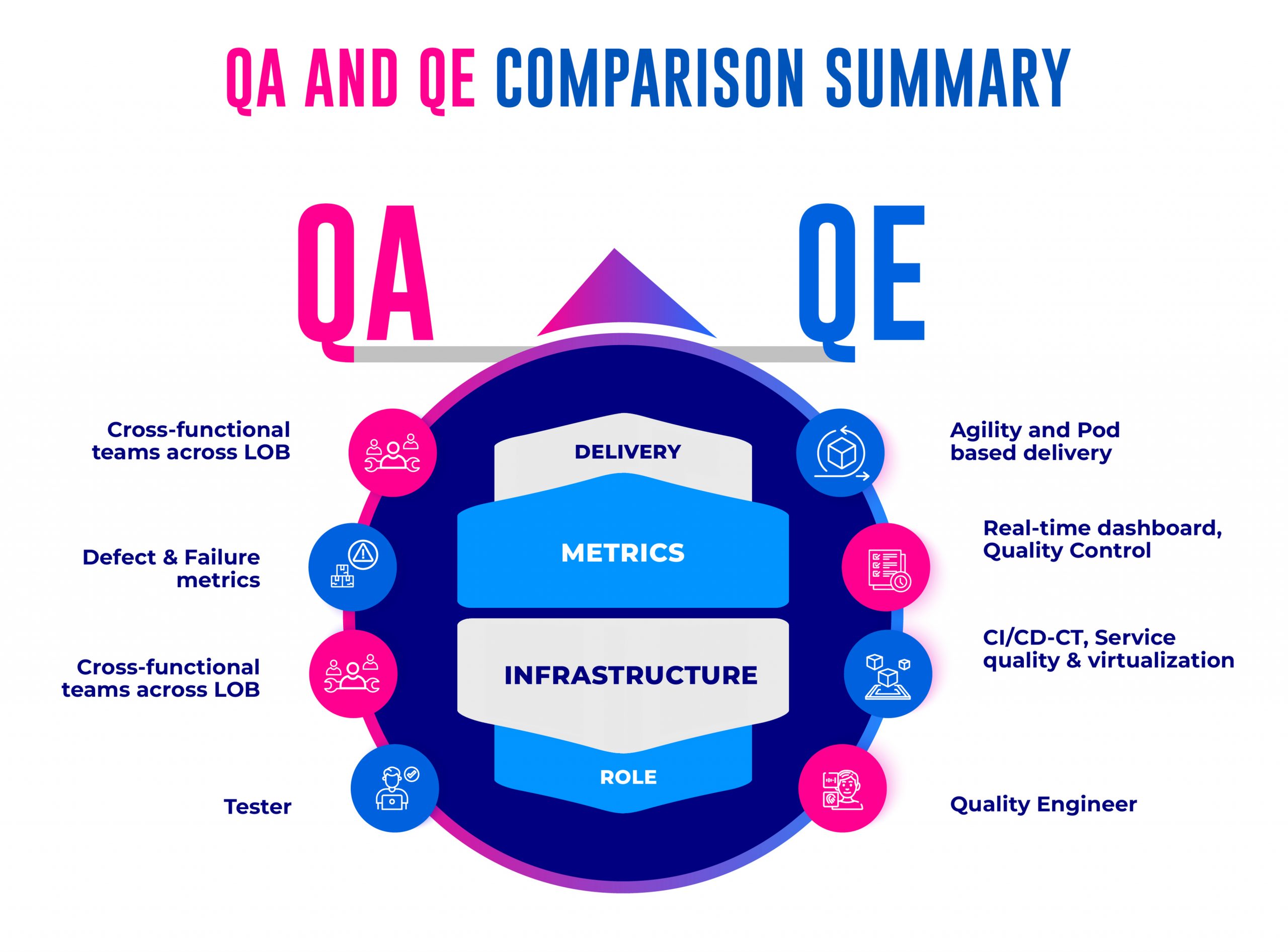Quality engineering replaces quality assurance (QA) in manufacturing and software development (QE). What’s the difference between quality engineering and quality assurance, and why is it growing?
Let’s start with the QA roles. QA is the most common tester title today. This engineer ensures product quality through testing and human and automated procedures. They also monitor software development lifecycle procedures for ISO 9000 and CMMI compliance. The process is usually automatic, although this title is sometimes misconstrued to suggest that this engineer only does manual testing.
A Quality Engineer is not the same as a QA.
Quality engineers (QEs) use engineering methods to improve software development. A QE must establish a quality plan, update code, generate incident reports, run all tests, utilize the same tools and processes as the developer, operate in continuous integration, and understand the project’s business goal.
Partnering with domain experts in quality engineering, like Maveric systems, offers banks and FIs mature advantages to their overall growth strategy.

How do the two compare and contrast?
Before delivery, organizations often use quality assurance or QA. This is especially true for technology businesses that use quality assurance professionals for final production.
Quality engineering (QE) is a modern idea that integrates quality assessments throughout the production schedule. Understanding your team, their needs, and your customers’ needs can assist you in choosing a QA or QE procedure for production and delivery.
Understanding the QA function in depth is essential before we move to QE.
QAs, plan and execute quality standards to produce quality solutions. QEs automate manual, recurring operations to improve efficiency and reduce errors. QA and QE focus differently, yet both desire outstanding results.
QA begins planning in Agile. QA is needed throughout the product development lifecycle for the following:
- Test planning, sprint planning, release planning, and ceremonies as the testing subject matter expert.
- Backlog Management—identifying missing Acceptance Criteria and edge cases to create cases.
- Reporting testing status throughout daily stand-ups and running functional tests after story development.
- Testing functionality and behavior, documenting bugs and collaborating with developers during retesting and issue discovery.
- Finding application regression, browser, mobile, UX, performance, and security test cases.
- Working with the client team—providing test steps for acceptance testing, assessing and coordinating issues uncovered during testing, and classifying them as defects or upgrades.
While the QE’s role takes on another dimension of the Quality Process. They work closely with the product owner to:
- Find repeating test scenarios.
- Find tests that use many browsers, devices, and OS versions.
- Identify end-to-end test cases.
- Automate discovered test cases using automation testing frameworks/tools.
- Solve most manual testing issues.
- Automate CI tests for build deployment in several settings.
- After fixing automation test failures, rerun tests.
Conclusion
QE is related to DevOps and agile software development. DevOps integrates software development with IT operations to break down “silos” and improve communication between development and security teams. Security is integrated throughout development.
Recently, testing has grown through quality engineering that starts early in application planning and develops a continuous feedback loop to anticipate and act on the unknown.
Artificial intelligence (AI) and automation can help teams detect and fix issues faster by collecting historical data. Modern-day software development processes force teams to adjust to a process that supports multiple minor releases instead of longer, fewer ones. Today Artificial intelligence and automation systems are pushing the shift from QA to QE.
About Maveric Systems
Starting in 2000, Maveric Systems is a niche, domain-led Banking Tech specialist partnering with global banks to solve business challenges through emerging technology. 3000+ tech experts use proven frameworks to empower our customers to navigate a rapidly changing environment, enabling sharper definitions of their goals and measures to achieve them.
Across retail, corporate & wealth management, Maveric Systems accelerates digital transformation through native banking domain expertise, a customer-intimacy-led delivery model, and a vibrant leadership supported by a culture of ownership.
With centers of excellence for Data, Digital, Core Banking, and Quality Engineering, Maveric Systems teams work in 15 countries with regional delivery capabilities in Bangalore, Chennai, Dubai, London, Poland, Riyadh, and Singapore.











